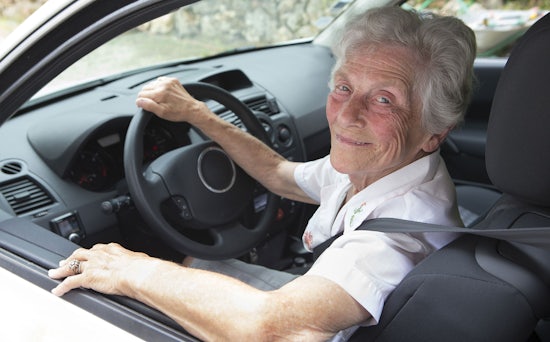22 recommendations to make roads safer for older people
Lower speed limits, simplified traffic junctions, more pedestrian safety infrastructure, increased mobility scooter education and older drivers utilising in-vehicle detection technology are just some of the 22 recommendations in Austroads’ Older Road Users – Emerging Trends report.

The report shows older drivers still had fewer crashes than younger drivers (Source: Shutterstock)
Conducted for Austroads by the Centre for Automotive Research (CASR) at the University of Adelaide, the report is based on research from range of resources including analysing 10 years of crash data from every jurisdiction in Australia and New Zealand and three years of detailed hospital injury data for older road users in South Australia.
While the report notes older drivers still had fewer crashes than younger drivers, even after controlling for decreases with age in population and licensure, older drivers are more likely to be seriously or fatally injured in a crash than drivers in younger age groups due to a reduced tolerance to injury.
Council of the Aging (COTA) SA welcomed the report, highlighting it calls for an emphasis on road infrastructure as part of keeping roads safer for all drivers and pedestrians.
“More traffic lights, use of speed restrictions and other devices will keep the roads safer for everyone and is a welcome contribution to adapting roads to suit the diversity of drivers now using our roads,” says Jane Mussared CE, COTA SA. “The reality is that not only are our modern roads busier, there are also significant changes in the demographic profile of the population of road users, people are keeping their licenses longer and the vehicles themselves are changing.”
She notes while the report does not suggest that we should remove the need to ensure that drivers are competent, it does recommend some very practical investments in road infrastructure and the uptake of assistive technology that would help drivers of all ages to be more safe and competent.

“This report is a worthwhile contribution to a debate that has seen
older drivers often singled out for blame despite strong evidence
showing that this is neither true nor fair,” says Ms Mussared.
Department of Planning, Transport and Infrastructure South Australia
(DPTI) also welcomed the report saying the safety of older road users is
a priority in South Australia’s Road Safety Strategy, Towards Zero
Together. While the number of older South Australians killed or
seriously injured during the last 10 years (1066) was significantly
lower than the almost 4,000 young people aged between 16 and 24 killed
or seriously injured, common crash types for older South Australian
drivers are right turn crashes and crashes due to disobeying a traffic
signal or sign.
“The State Government is pursuing a range of actions that will help
to improve safety for older road users, such as progressively improving
safety at signalised intersections with a poor crash history, including
controlling right turns, and installing infrastructure treatments that
support lower travel speeds to improve the safety of pedestrians,” a
spokesman says.
A free webinar giving an overview of the emerging trends in crash
involvement among older road users, aged 75 years and over will be held
on Thursday 24 November 2016 at 2-3pm AEST. Registration for the seminar is essential.























